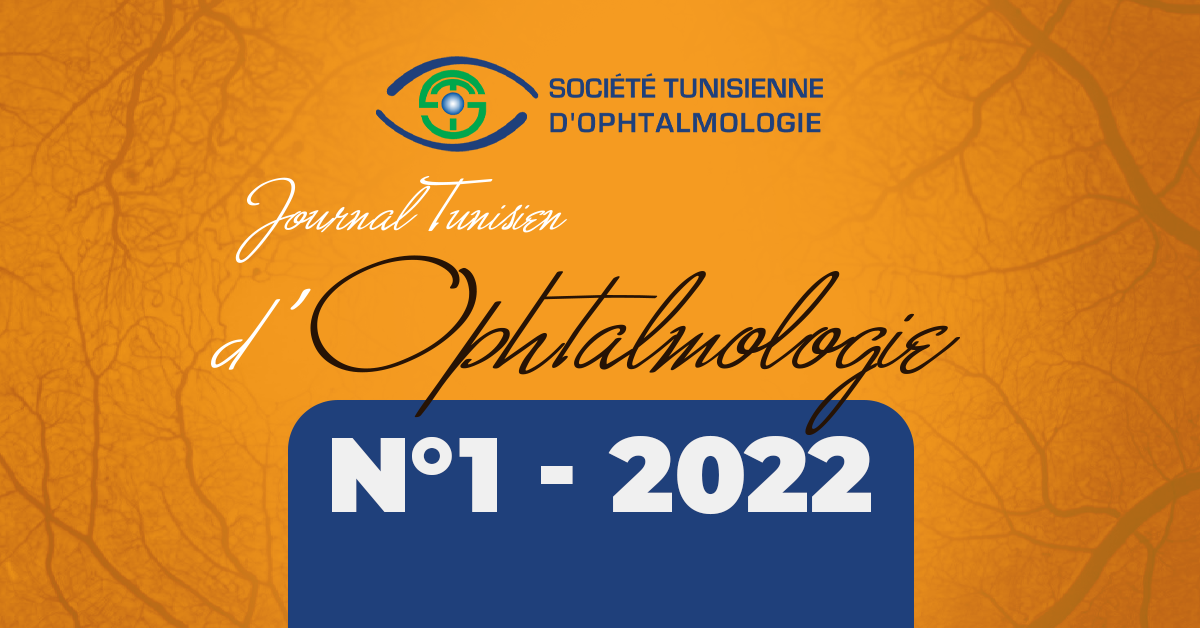
Uveitis revealing coeliac disease : a case report
18 octobre 2023
Occlusion de l’artère centrale de la rétine en post-opératoire immédiat de vitrectomie pour décollement de rétine rhegmatogène
18 octobre 2023
Hématome maculaire post-traumatique : une évolution spontanée favorable
Zgolli Hsouna, Abdelhedi Chiraz*, Fekih Olfa, Mekni Manel, Malek Ines, Zghal Imene, Nacef Leila
Department A, Hedi Raies Institute of Ophthalmology (Tunis, Tunisia)
Faculty of Medicine of Tunis, University of Tunis El Manar, Tunis, Tunisia
Keywords
submacular, traumatic, course, hemorrhage
Abstract
Purpose. This study aims to evaluate the anatomical and functional outcomes of patients with traumatic submacular hemorrhage (SMH).
Methods. Retrospective, observational case series of patients with submacular hemorrhage secondary to blunt trauma, presenting between January 2020 and December 2020 to the Department A of the Hedi Raies Institute of Ophthalmology (Tunis, Tunisia).
Results. Six patients were enrolled in the study. Mean age was 27 years old [17-42 years old]. A male predominance was recorded (4 men). The hematoma was small in 3 patients, and medium otherwise. Retrofoveal location was described in 1 patient.. Non-surgical option has been adopted in these cases. All patients were monitored. All hematomas resolved spontaneously after a period of time. A rupture of the underlying Bruch’s membrane was observed in all patients. The final best corrected visual acuity ranged between 20/63 and 20/20 (Snellen chart).
Conclusion. Traumatic subretinal hematoma may occur after closed globe injury. Its management remains a subject of debate. A rapid and spontaneous resolution of the hematoma without substantial damages is rare.
Mots-clés
sous-maculaire, traumatique, évolution, hémorragie
Résumé
Objectif. Cette étude vise à évaluer les résultats anatomiques et fonctionnels chez les patients atteints d’hémorragie sous-maculaire traumatique (SMH).
Méthodes. Il s’agit d’une série de cas rétrospective et observationnelle de patients présentant une hémorragie sous-ma- culaire secondaire à un traumatisme contondant, ayant consulté entre janvier 2020 et décembre 2020 au Département A de l’Institut d’Ophtalmologie Hedi Raies (Tunis, Tunisie).
Résultats. Six patients ont été inclus dans l’étude. L’âge moyen était de 27 ans [17-42 ans]. On a noté une prédominance masculine (4 hommes). Le volume de l’hématome était petit chez 3 patients et de taille moyenne chez les autres, avec une localisation rétrofovéale chez 1 patient. Une approche non chirurgicale a été adoptée dans ces cas. Tous les patients ont été suivis. Tous les hématomes ont disparu spontanément après un certain laps de temps. Une rupture de la membrane de Bruch sous-jacente a été observée chez tous les patients. L’acuité visuelle finale corrigée variait entre 20/63 et 20/20 (tableau de Snellen).
Conclusion. Les complications infectieuses liées aux corps étrangers intraoculaires végétaux sont des complications sévères qui représentent une menace importante pour la fonction visuelle, avec un pronostic réservé.
